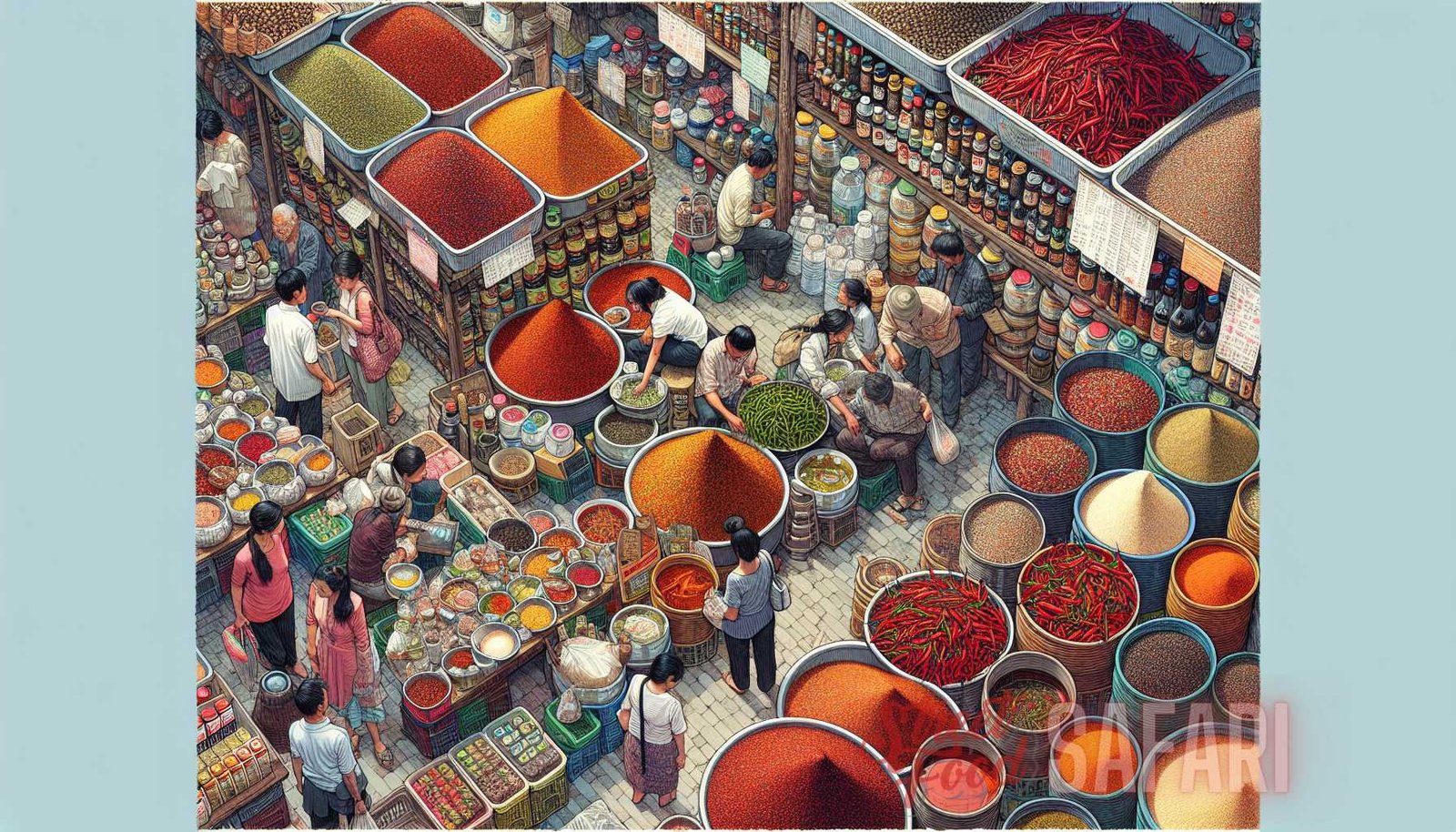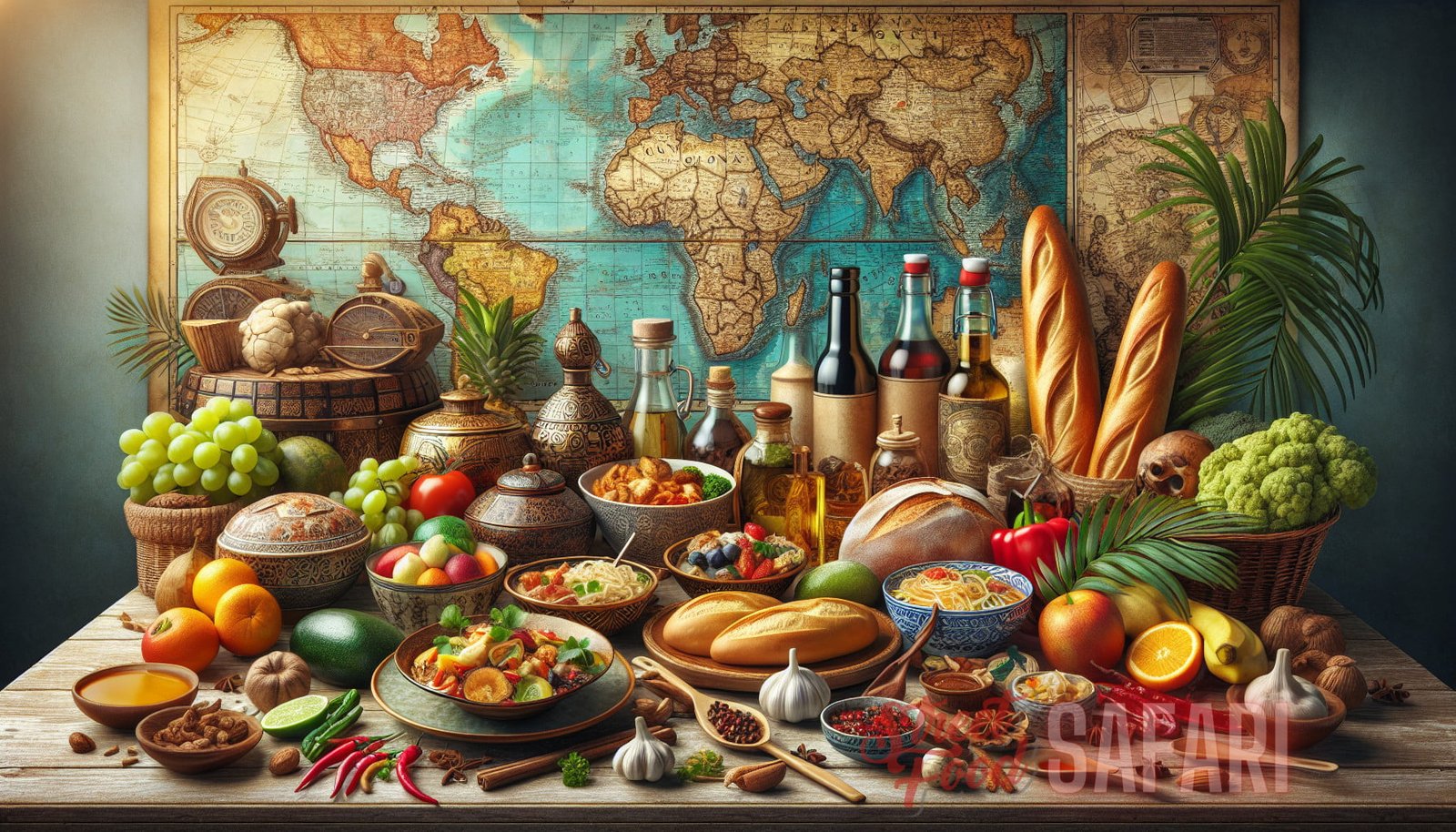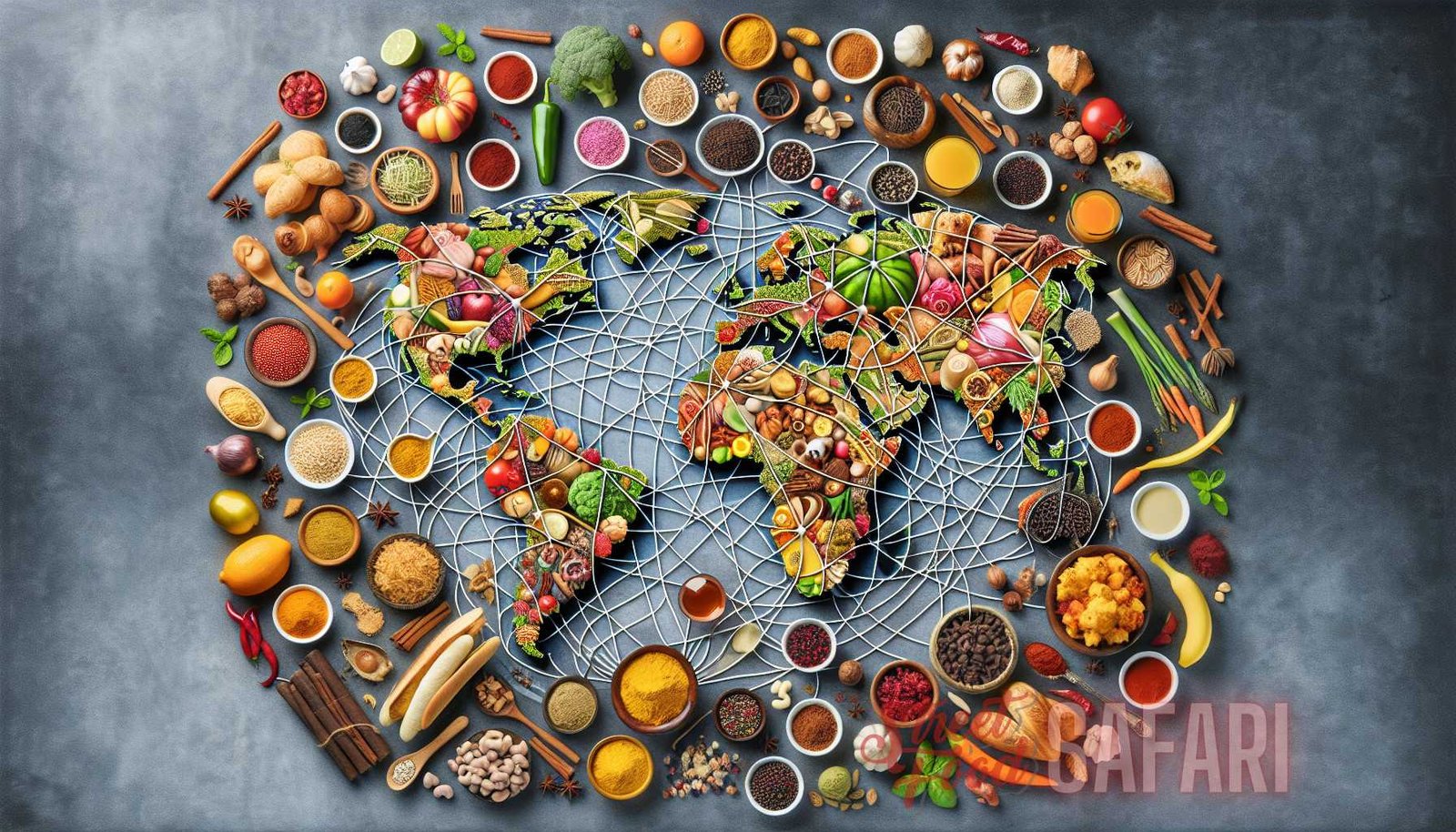Unmasking the Intriguing Origins: Revealing the Global Influences on Culinary Markets
In today’s interconnected world, culinary markets have become a melting pot of global flavors. From street food stalls to high-end restaurants, the influence of different cultures on local cuisine can be seen and tasted everywhere. To truly understand the fascinating origins of these culinary delights, we need to delve into the history and cultural exchanges that have shaped our modern gastronomy. From the spice routes of ancient times to the colonization and migration that followed, the global influences on culinary markets are undeniable. In this article, we will explore the rich tapestry of flavors and the stories behind them, unmasking the intriguing origins that have shaped culinary markets worldwide.
The Spice Routes: A Journey of Flavors
One of the earliest examples of global influences on culinary markets can be traced back to the spice routes of ancient times. These intricate network of trade routes connected the East and the West, allowing spices and other exotic ingredients to travel across continents. Spices such as cinnamon, cloves, and nutmeg were highly sought after for their unique flavors and medicinal properties. As these spices made their way to different parts of the world, they became integral ingredients in local cuisines, adding depth and complexity to dishes.
The impacts of the spice routes can still be tasted today. For example, the use of spices like turmeric and cardamom in Indian cuisine can be attributed to the ancient spice trade. Similarly, the flavors of Southeast Asian cuisine, which often feature aromatic spices such as lemongrass and galangal, were heavily influenced by the historical spice routes.
The Age of Exploration: Culinary Exchanges and New Discoveries
The age of exploration in the 15th and 16th centuries marked a turning point in culinary history. As European powers such as Portugal, Spain, and the Netherlands set sail to discover new trade routes, they encountered new lands, cultures, and foods.
One of the most significant culinary exchanges during this period was between the Old World and the New World. European explorers brought back a variety of foods previously unknown in Europe, such as potatoes, tomatoes, corn, and chili peppers. These new ingredients revolutionized European cuisine, leading to the creation of dishes such as tomato-based sauces, potato dishes, and spicy stews.
At the same time, the European colonizers also brought their culinary traditions and ingredients to the lands they conquered. This resulted in the fusion of different cuisines and the birth of new culinary traditions. For example, the blending of Indigenous ingredients with European cooking techniques gave rise to the vibrant and flavorful cuisines of Latin America.
The Era of Globalization: Culinary Fusion and Innovation
In the modern era of globalization, the influences on culinary markets have become even more diverse and complex. With the ease of travel and the interconnectedness of cultures, culinary fusion has become a common phenomenon. Chefs and food enthusiasts are constantly experimenting with new flavors, combining ingredients and techniques from different parts of the world to create innovative dishes.
Global flavors are now readily available in many countries, thanks to the international food trade and the rise of multicultural societies. People can experience the tastes of different cultures without leaving their own cities. This has led to the popularity of fusion cuisines, where traditional dishes are given a modern twist by incorporating elements from different culinary traditions.
An example of culinary fusion can be seen in the blending of Japanese and Peruvian flavors in the form of Nikkei cuisine. This unique culinary style emerged from the Japanese immigrant community in Peru and combines the delicate techniques of Japanese cuisine with the bold flavors of Peruvian ingredients.
Regional Influences on Culinary Markets
While global influences have shaped culinary markets worldwide, it’s important to recognize the significant role of regional influences as well. Each region has its own unique culinary traditions, ingredients, and flavors that have been passed down through generations.
Asia: A Continent of Diverse Flavors
Asia is a vast continent with a rich culinary heritage. From the spicy curries of India to the delicate flavors of Japanese sushi, the diversity of Asian cuisine is staggering. Each country within Asia has its own distinctive flavors and ingredients, influenced by factors such as geography, climate, and historical trade routes.

The use of spices is particularly prevalent in Asian cuisine. For example, the use of chili peppers in Thai cuisine and the complex spice blends in Indian cuisine are integral to their respective culinary traditions. On the other hand, the use of soy sauce and fermented ingredients like miso and kimchi are key components of East Asian cuisines, such as Chinese, Japanese, and Korean.
Regional influences within Asia can also be seen in the similarities and differences between neighboring countries. For instance, the flavors of Vietnamese cuisine are influenced by the herbs and spices of Southeast Asia, while Thai cuisine showcases the harmonious balance of sweet, sour, spicy, and salty flavors that is characteristic of the region.
Europe: A Tapestry of Timeless Flavors
Europe is a continent renowned for its culinary traditions. Each country within Europe has its own signature dishes and flavors, shaped by centuries of history and cultural exchange.
The Mediterranean region, for example, is known for its healthy and vibrant cuisine. Olive oil, garlic, and fresh herbs are staples in Mediterranean cooking, adding depth and richness to dishes such as Greek moussaka and Italian pasta sauces.
Northern European cuisines, on the other hand, often rely on hearty ingredients such as potatoes, cabbage, and root vegetables. Traditional dishes like Swedish meatballs and Irish stew showcase the comfort and simplicity of these flavors.
Eastern European countries, such as Russia and Poland, have their own distinct culinary traditions. Rich, hearty dishes like borscht and pierogi reflect the colder climates and agricultural heritage of these regions.
The Americas: A Blend of Indigenous and Immigrant Cultures
The culinary traditions of the Americas are a blend of Indigenous ingredients and techniques with the flavors brought by immigrants from around the world.
In North America, Indigenous foods such as corn, beans, and squash have been staples for centuries. These ingredients form the foundation of many Native American dishes, such as succotash and frybread. The arrival of European settlers brought new ingredients and cooking techniques, leading to the creation of dishes such as clam chowder and apple pie.
In Latin America, the fusion of Indigenous, European, and African influences has resulted in a diverse and vibrant cuisine. Ingredients such as maize, beans, and chili peppers are central to Latin American cooking. Dishes like tamales, ceviche, and feijoada are just a few examples of the rich flavors found in this region.
Nurturing Culinary Exchange: The Role of Travel and Education
To fully appreciate and understand the global influences on culinary markets, it’s important to embrace opportunities for travel and education. Immersing oneself in different cultures and experiencing their culinary traditions firsthand is an invaluable way to explore the origins of global flavors.
Travel allows us to taste authentic dishes, visit local markets, and learn from talented chefs who are passionate about their craft. Engaging with locals and participating in cooking classes or food tours can provide insights into the history and cultural significance of the foods we enjoy.
Education also plays a crucial role in nurturing culinary exchange. Culinary schools and programs offer students the opportunity to learn about different cuisines, techniques, and ingredients from around the world. By studying and practicing diverse cooking styles, aspiring chefs can hone their skills and create innovative dishes that reflect global influences.
Additionally, websites and resources dedicated to culinary exploration, such as Street Food Safari, provide valuable insights for food enthusiasts and travelers. These platforms offer in-depth articles, guides, and recommendations to help navigate the vibrant world of global flavors.
In conclusion, the global influences on culinary markets are vast and fascinating. From the ancient spice routes to the modern fusion cuisines, the world of food is constantly evolving and reflecting the diverse cultures and histories that have shaped it. By unveiling the intriguing origins behind our favorite dishes, we can gain a deeper appreciation for the flavors and stories that make our culinary experiences truly memorable.



